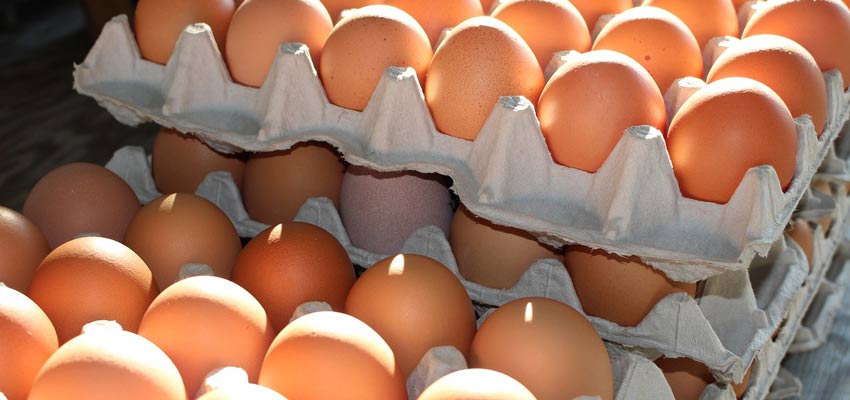The Federal Institute for Risk Assessment (BfR) has assessed the levels of per- and polyfluoroalkyl substances (PFAS) in chicken eggs from different types of farming.
Per- and polyfluorinated alkyl substances (PFAS) are a large group of chemicals that persist in the environment for a long time and enter the human body via the food chain. The Federal Institute for Risk Assessment (BfR) has estimated the amounts ingested via chicken eggs. A distinction was made between eggs from laying hens from different types of farming.
First, the good news: the maximum content for the sum of the four regulated PFAS compounds was not exceeded in any of the samples. The respective individual compounds were also below the maximum permissible levels (PFOS: 1,0; PFOA: 0,30; PFNA: 0,70; PFHxS: 0,30; Sum: 1,70 µg/kg wet weight).
The current levels show a downward trend for the sum of the indicator PFAS.
Looking at chicken eggs alone, consumer exposure in Germany is below the tolerable weekly intake (TWI) of 4.4 µg per kg of body weight per week. Health consequences solely from the consumption of eggs are therefore not to be expected.
The highest PFAS levels were found in eggs from organic production and free-range farming.
Eggs from barn-raised hens, on the other hand, had significantly lower PFAS levels.
Now for the bad news: small amounts of these ‘forever chemicals’, as PFAS are sometimes called, can also be ingested through numerous other foods. In total, this can lead to certain individuals and diets exceeding the above-mentioned TWI value. Despite declining levels, eggs continue to account for a significant proportion of the total intake of these environmental contaminants, which are now the subject of intensive efforts to ban them in part and find replacements.
Link: (im German)
YOUR PLUS: In addition to the four regulated substances, the AGROLAB GROUP's laboratories also test for other PFAS listed in the EU's extended monitoring recommendations.
Author: Dr. Frank Mörsberger, AGROLAB GROUP

 Contact
Contact

 Contact
Contact Career
Career